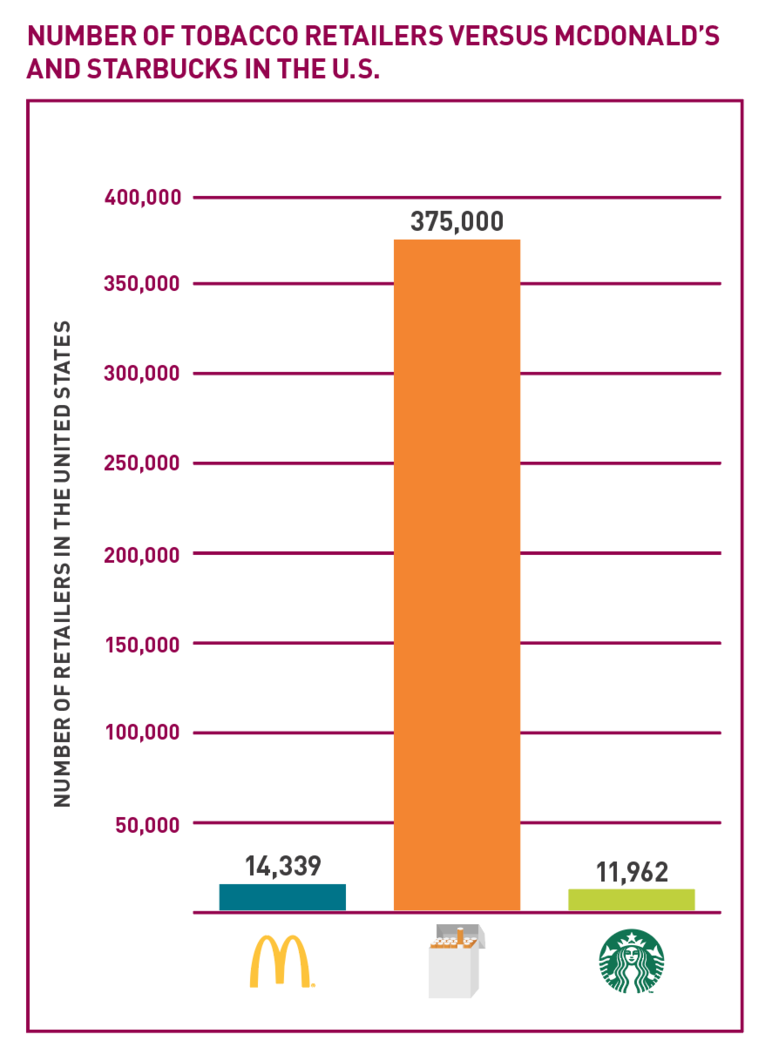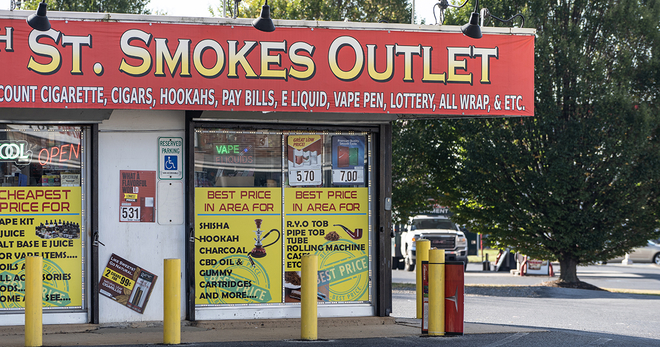Behind the marketing strategy that costs the tobacco industry $900k an hour
The tobacco industry spent over $8.6 billion on marketing in retail establishments, also called point-of-sale marketing, in 2014 (the most recent year figures are available).

Why spend such big bucks? Research shows that it is very effective: Youth who are frequently exposed to point-of-sale tobacco marketing are twice as likely to try smoking as those who are not as frequently exposed. In fact, about one-third of teenage experimentation with smoking can be directly attributed to tobacco marketing in retail environments.
There are a lot of opportunities for exposure to this type of marketing. An estimated 375,000 retailers—including convenience stores, supermarkets, liquor stores and even pharmacies—sell tobacco products in the U.S. That’s equivalent to 27 times more tobacco retailers than McDonald’s and 28 times more than Starbucks.
But what exactly is point-of-sale tobacco marketing? It involves much more than signs in stores. Here’s how the tobacco industry’s retail practices influence and drive smoking behavior among youth and young adults.

PROMOTION
In 2014, the tobacco industry spent over $270 million to promote its products in tobacco retailers through marketing items such as branded signs, displays and shelving units. A 2012 study found that 96 percent of stores that sold cigarettes had at least one tobacco marketing item, with an average of 29.5 items per store.
Convenience stores, where 70 percent of youth shop at least once a week, have more tobacco marketing and sell more cigarettes than any other type of retail store. Most youth in the U.S. describe seeing tobacco marketing all, or most of the time when they visit convenience stores.

PLACEMENT
In most retail stores, the checkout counter is the best place to encourage impulse purchases. Because of this, tobacco companies spent over $702 million in 2014 to strategically place tobacco products and marketing materials in highly visible locations around checkout counters to ensure the most exposure and increase sales.
While the 2009 Tobacco Control Act requires cigarettes and smokeless tobacco products be displayed behind the counter, this requirement does not apply to other tobacco products like little cigars and e-cigarettes. Many of these products come in youth-appealing flavors and may be placed on countertops. Some stores even have low-height interior tobacco ads and place displays near candy—all tactics that can increase access and exposure to youth and young children.

PRICE
The average price for an individual pack of cigarettes in the U.S. is about $6. Research shows that if a pack of cigarettes cost $10, approximately 1.5 million U.S. youth and young adults would avert an early death. Higher tobacco prices benefit public health, but tobacco companies soften the impact of tax increases on tobacco products by directly dropping wholesale prices, or offering coupons, multi-pack discounts or price discounts. The tobacco industry spent over $7 billion on price discounts and coupons for cigarettes in 2014—its largest marketing expenditure that year.
Evidence shows that these price-reducing marketing efforts target specific brands or venues that are important for young people. A 2012 Surgeon General report concluded that “the industry’s extensive use of price-reducing promotions has led to higher rates of tobacco use among young people than would have occurred in the absence of these promotions.”
For more information on tobacco industry retail practices, including licensing and density, price, placement and promotion, read our fact sheet and policy resource.
More in tobacco industry marketing
Want support quitting? Join EX Program
By clicking JOIN, you agree to the Terms, Text Message Terms and Privacy Policy.
Msg&Data rates may apply; msgs are automated.



